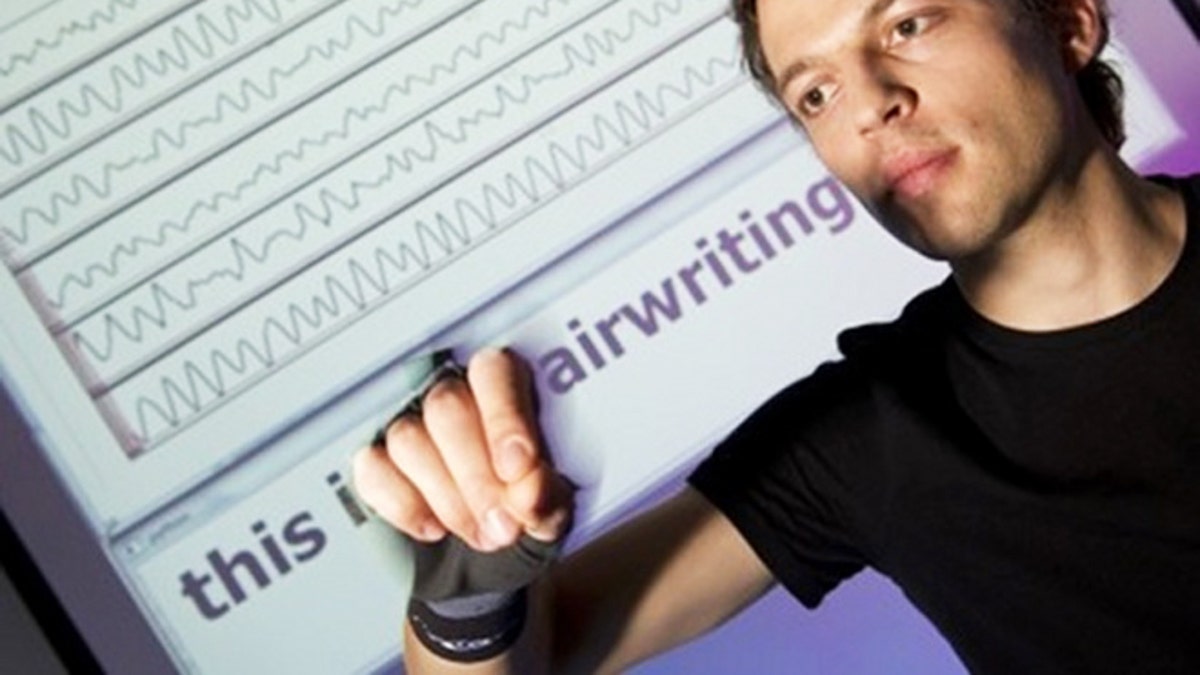
Airwriting: Based on motion signals, a computer recognizes letters written into thin air. (Volker Steger)
Typing is so last century.
Wearable computers integrated into a soldier’s standard uniform or a civilian’s clothing could remove the need to type in the future -- letting them skip the keys and simply write on the air.
Computer scientists at Karlsruhe Institute of Technology in Germany have developed the technology; they call it “Airwriting.”
'The airwriting glove is used to write letters into air, as if using an invisible board or pad.'
Airwriting is what it sounds like. A person writes in the air and a computer reads the motion of the hand and recognizes the letters written in the air. The new interface could lead to computers worn like a glove or wristband.
Airwriting research team Professor Tanja Schultz and student Christoph Amma received a Google Faculty Research Award in February -- and a prize worth $81,000 -- for their research.
Typing with gloved hands is a regular challenge for law enforcement monitoring the skies in helicopters, warfighters at forward operating bases and others. And civilians who have struggled to type messages on the tiny keyboards on their cell phones will appreciate the system as well.
In their system, an airwriting glove is used to hand-write letters in the air as if writing on an invisible chalk board. To record the movements, the thin glove has acceleration sensors and gyroscopes built into it.
A computer system then captures the signals, decodes them with pattern recognition and translates them into text.
Other research in this area often relies on cameras; Schultz and Amma used small, robust sensors to record the hand movements and transmit them wirelessly.
Their system first checks and verifies the user is writing rather than going about their daily errands and work.
Many gamers are familiar with systems that use gestures linked to specific commands, seen in consoles from Xbox and Nintendo – this system is different.
Airwriting tech has a vocabulary of about 8,000 words and can recognize complete sentences and even capital letters.
The system is also capable of adapting to a user’s distinct writing style and unique differences. The researchers cite an error rate of 11 percent that drops to a remarkable three percent when the system is adjusted to an individual.
"All movements that are not similar to writing -- such as cooking, doing laundry, waving to someone -- are ignored,” Anna said.
Their tech could be combined with eyeglasses containing integrated screens (Google Glass, perhaps?) to ultimately render handheld devices obsolete.
Ballet dancer turned defense specialist Allison Barrie has traveled around the world covering the military, terrorism, weapons advancements and life on the front line. You can reach her at wargames@foxnews.com or follow her on Twitter @Allison_Barrie.
